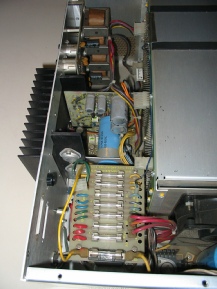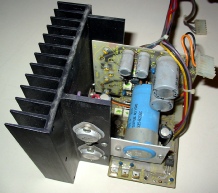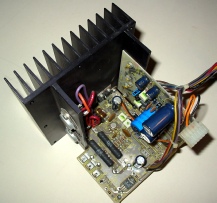© 2013 Benden Sound Technology
Made by Serif



Refurbishment
The first three units I worked on were in poor shape. They had been acquired from a service centre, had no known history and had clearly seen a lot of action. The strong suspicion was that they were loaded with all the bad parts which had accumulated over a period, so I expected multiple faults and was not disappointed.
Some of the many issues overcome were:
-
-
-
-
-
-
-
-
-
However, in keeping with their overall high standard of engineering, Lexicon built
into their firmware some very comprehensive self-
Less helpful is the fact that the chassis is entirely welded together with no removable panels, hence servicing anything other than the removable cards can require some complex disassembly.
Once the units were operational again, attention was given to making them reliable for years to come. My recommendations for work that should be done proactively on any 224/224X are as follows, and these were all carried out:
1. Re-
The 224/224X uses a large, multiple-
2. Clean the card edge connectors.
Many problems can be traced to poor contacts between the cards and cardframe. IC sockets can also be problematic.
3. Replace the NiCd memory backup batteries.
These are located on the NVS card (fitted to units with firmware above v4.4) and can leak with messy consequences for the card. They should be replaced if this has not already been done.
4. Recalibrate the ADC and DAC.
This minimises distortion for optimal audio performance.
5. (optional) Re-
A further few electrolytic capacitors are present elsewhere in the unit along with
a large number of tantalum caps. These don't degrade in an age-
Many 224s suffer from broken power switches because, unless support is provided when
removing the front panel, all its weight hangs on the plastic shaft of the power
button and casualties are inevitable. The original switch is a Schadow type N30X-
Sound
A lot has been said about the sound of the 224 and I was keen to try one out. I hooked
up my Yamaha electronic piano and A/B'd the Lexicons with both the Yamaha's internal
reverbs and an E-
Being a send/return effect (as opposed to an insert device), the limited bandwidth
of the 224 wasn't particularly noticeable. Neither did the extra bandwidth of the
224X make as much difference as might have been expected -
The extra non-
The interesting question is: what makes the 224 sound so good? The quality of the algorithms is the obvious answer, though aficionados claim that the later Lexicon effects units (which presumably possess equal or better algorithms) lack the same "mojo".
We can rule out the purely digital circuitry, the characteristics of which are defined wholly by the algorithm.
Perhaps it is the analogue-
I would offer one last possibility. Very few more modern/lower-
The Future?
I now possess extensive documentation and EPROM images for the 224 and 224X as well
as a full set of known-
Of course, the temptation to assemble those spare cards into a working unit is strong.
I possess a suitable cardframe (though an original Lexicon frame would be better)
and aim to replicate the ancillary parts as time allows. The 224 also seems to be
a prime target for emulation on a modern FPGA, but that is a project for after-

Inside the chassis of the Lexicon 224 -

Lexicon 224 power supply before overhaul.

Lexicon 224 power supply after overhaul. Modern electrolytic caps are much smaller and no longer need support bracket.
| Crumar Ensemble |
| G-SSL Compressors |
| Lexicon 224/224X Reverberators |
| Oberheim OB-X |
| Oberheim Xpander |
| OB-VFD Display Upgrade |